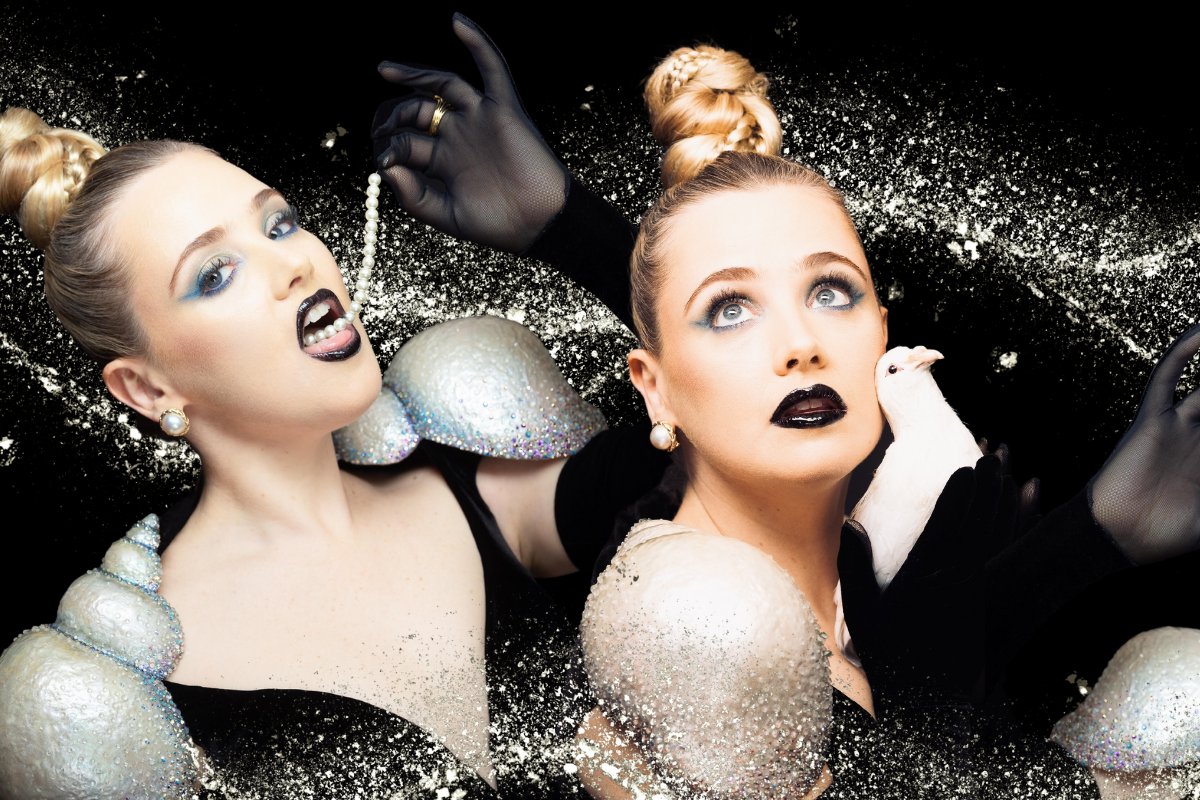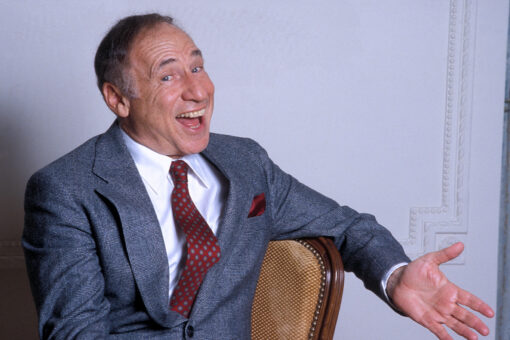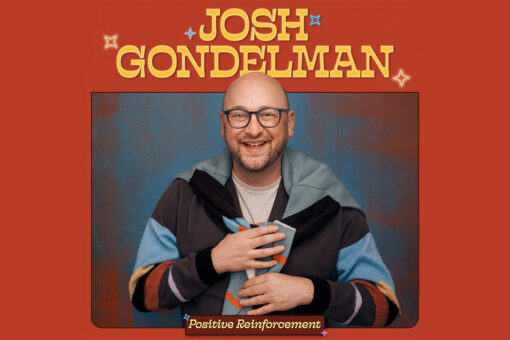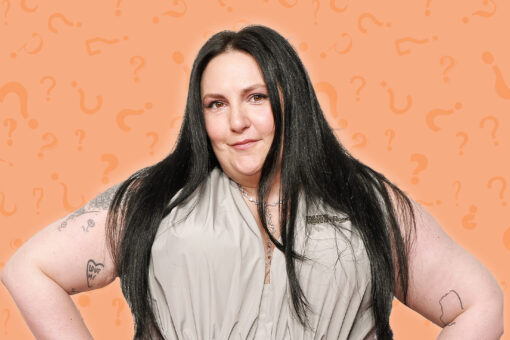Liz Toonkel isn’t your average magician. She isn’t going to pull a live rabbit out of a hat. She’s not going to make a real dove vanish up her sleeve, nor is she going to saw herself in half or make herself disappear.
Instead, the queer Jewish performance artist and production designer is making herself and her beliefs as visible as possible – that’s the point.
This week, Liz’s show “Magic for Animals” opens its nearly month-long run at the Edinburgh Festival Fringe. A magic variety show, “Magic for Animals” subverts the tropes of typical magic shows, instead using tricks and illusions to examine human agency, consent, sexism and animal rights. But while her props include things like a magical crocodile skin Hermes Birkin bag, the inspiration for the show is slightly more down-to-earth: the Jewish philosopher Maimonides’ five steps for teshuvah.
Liz caught up with Hey Alma to chat about “Magic for Animals,” doing production design for “Marcel the Shell” and the magic of Judaism.
This conversation has been lightly edited and condensed for clarity.
Could you tell me about your show?
I am a very interdisciplinary artist and person. I’ve been making performance art for the last 12-13 years. And with the last project that I started and then stopped, I got really interested in magic. I was trying to do an opera only performed by my hands. While I was working on it, I was like, OK, what’s hand performance? And then I started teaching myself some sleight of hand magic. And I was like, Oh, I want to learn more about this. Then I started taking classes and I realized that I just wanted to make a magic show. I’m also a production designer on movies so I’ve always been really interested in magical techniques and love theatrical things that use practical ways of doing things. So I took a little bit of a break and studied magic for a number of years.
As I was doing that, I felt like I had something unique to bring to magic because I was kind of an outsider. I tried to bring the same sort of performance style and ideas in my performance art to it, which really sets it apart. I’m a member now at Magic Castle and a lot of the magic that I see, everyone does the same sleights, but it’s what they say and what they do with it. And I was like, wouldn’t it be so cool to not only have [my show] be entertaining and exciting, but also like my performance art, which is very feminist? Can I also try and say something with it and use magic as this socio-political tool? So that was my goal.
And I love animals. A lot of my art has been about animals. And I was like, what if I make my show all about my love of animals and making these magic tricks that might inspire people to change the way that they treat animals? And how can I also take that knowledge as a way to look at how we treat other people?
In the press release it said that teshuvah and Maimonedes’ steps of repentance inspired the show. In what ways?
I identify as Jewish and I was raised Jewish. I grew up in a very Jewish area, and I went to NYU, and most of my friends there were Jewish. When I moved to California, the communities that I was in were not really [Jewish]. That was the first time that I saw my difference in that way. That made me feel even closer to my Judaism. And it’s been a really important part of my life.
Now I’ve realized how much my Judaism informs my art, and how I want to highlight that in my art. The main idea of my show was about animals, but it’s also really about repentance and repair, the ways that we mistreat one another and where we go from there. That’s something I’ve thought a lot about in the past few years with #MeToo and cancel culture, trying to think about how we can actually use those for improving our society rather than just getting rid of people. I think to actually fix the problem, we have to talk about it.
I read this book called “On Repentance and Repair” by Rabbi Danya Ruttenberg and she was very informed by the five steps of repentance and repair from Maimonedes. I thought a lot about that and the five steps when I was crafting the structure of my show. Since a very long time ago, there have been these deeper systems for trying to work through large issues societally. And it does seem like a real misstep that there’s not more conversation about that in our current moment.
Would you say that your beliefs in feminism and animal rights are rooted in Jewishness?
Yeah. I was definitely raised in a really specific Jewish experience and culture. I went to a Reform synagogue and my Jewish experience was always very positive. It felt like a place where many different kinds of people were welcome. So my Jewish experience really emboldened me as a woman. The temple that I went to had women in a lot of the roles of leadership. It also felt like a place where there was a lot of room for questioning and an emphasis on learning and the quest for knowledge. So much of my art-making practice now is research and reading.
And then I do admire that Judaism has a lot of respect for animals. Like with kosher practices, I mean, they’re imperfect, but there is this recognition of animals being thoughtful beings that resonates with me. Plus, pigs are my favorite animals. So I love that they’re off-limits. I did this residency with this Jewish artistic organization called Asylum Arts in southern California over COVID. We read the passage where Noah is instructed about who comes on the ark. And I thought the language used around animals was really interesting, even just the fact that in the Torah there is this appreciation for animals’ roles in the world.
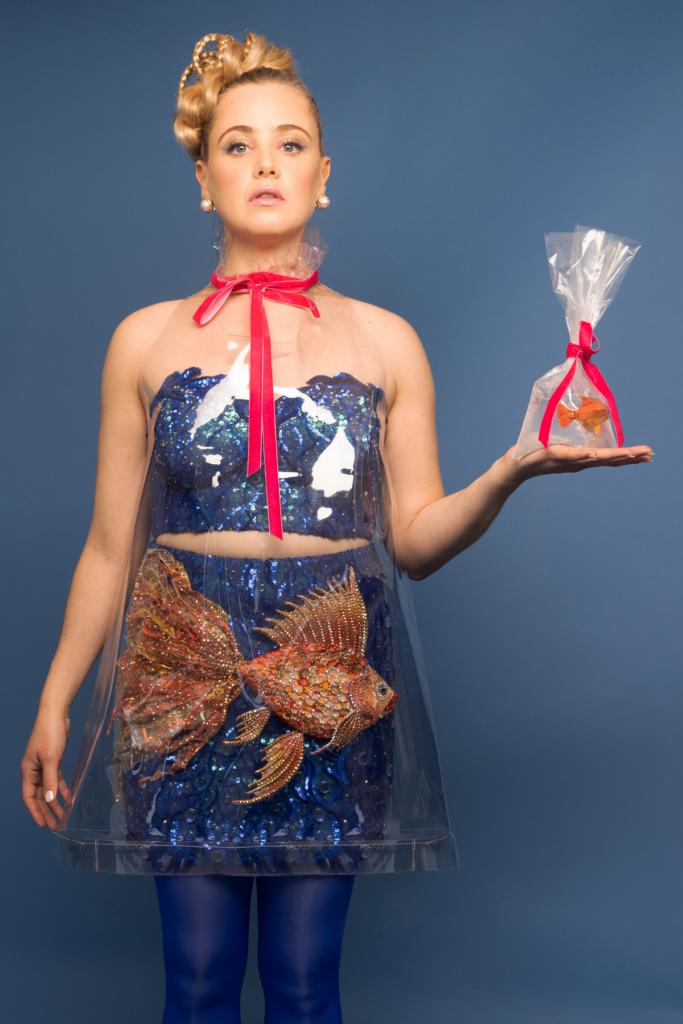
I think something that really drew me in about the show is the costuming. Could you tell me about the process of making your costume?
When I’m not making my own work, I work as a designer for theater and movies. I mostly do production design, but I also do costume design and costumes are a huge part of my art. Oftentimes the costume comes before anything else. I have this really fabulous peer, Steven James, who’s a costume designer, who I came to, and I was like, I have this idea, I really want this dress with a big goldfish on it. And so we worked together to make that happen. It was really important to me that [the dress] was vegan, because, I mean, my show talks a lot about how much we use animals in fashion. I think it’s important to show that you can be glamorous and fashionable and still think about what you’re buying and supporting. And it was really important to me to present as a glamorous mix of what a magician’s assistant looks like and what a magician looks like. Because even though there are a lot of women that do magic, they’re pretty invisible. Whenever I tell people I do magic, they’ve never even heard of one female magician. So the ways that I use my costume in the show also highlight the objectification of women in magic shows.
Another one of my favorite costumes is this black velvet dress with shells. That one Steven designed for me originally for the Art Directors Guild Awards – I was nominated for an award for the design I did on “Marcel the Shell With Shoes On.” I was like, let’s make a dress with shells and then I can also use it for magic. That dress is super fabulous. Making it vegan was a big challenge because it’s velvet, and almost all velvet used for couture is silk-based. One thing most people don’t know about silk is that silk kills silkworms. My friend Nick Rodrigues, who’s this amazing artist and helped me build a lot of the custom props in my show, designed and 3D-printed those shells. It’s kind of a perfect distillation of the main collaborators from my magic show in a dress.
I have to ask: What was it like doing production design on “Marcel the Shell”?
It was super exciting and very challenging. It felt really special that Marcel was something that a lot of people felt a connection to, but then we were all a part of the next iteration of that. And I feel I really used my magician skills in that movie because everything that we did was practical. Most objects were things that Marcel had to interact with and everything actually had to move in real life, not just in stop motion. It was very technical, but it always felt worth it.
Back to your point about female magicians, I was googling “Jewish magicians” and there are a lot of really notable ones: Harry Houdini, David Blaine, Teller of Penn and Teller. Even though they’re all men, have any of them inspired you?
That has been a real fascination for me, just the fact that the realm of magic was definitely a space Jewish people felt they had the ability to access when other things are off limits. It’s sort of like Hollywood, too. These are spaces that were accepting of difference. I think that’s a powerful thing. And to me it’s fun. It feels good to be part of that lineage or tradition. I definitely saw David Copperfield when I was little, and I was very enthralled and inspired by watching his performance.
But I just did my show at the Cincinnati Fringe Festival and I met a woman there who has written a book that she’s yet to publish all about Harry Houdini’s wife. And she actually had this community of women who were around the scene of magic, and I’m very interested to learn more about that.
I know a magician never reveals her secrets, but could you talk about some of the tricks in the show?
I’ll show you one fun thing. Like I said, I really wanted to talk about fashion. And so there’s this moment in the show where someone comes up and I’m like, “You get this rare opportunity to design your own custom luxury handbag! The first step is which animal are we going to kill and skin?” I have all these cards of different animals, and they end up picking the crocodile card. And then I basically reveal this version of a Birkin bag, but it has legs. I bring the bag to life and it walks on stage. I think it’s so depressing that the holy grail of fashion is a Birkin bag, which kills so many animals, especially the crocodile bags. The animals live in these awful concrete cells and are just so miserable.
But I want the show to be fun and energetic and funny. Because that’s what I think doesn’t work about a lot of activism, especially around animals, even for me, who’s very passionate. I just can’t watch those awful videos of a factory farm. It’s too much. With my show, I’m trying to create this space that’s judgment-free. We all have our different choices, our own different lives, but so do animals, so how do I welcome you into that? To me, that’s by being fun and funny. I think there’s something really interesting about being on stage as sort of a glamazon. Like, look, a fancy purse! But also, hey, let’s try to think differently.
I think that creates a deeper sense of recognition for people so they can enjoy the show and process later.
I love fashion. I’m someone who has old designer handbags and would covet something like [ the Birkin bag]. This show is not about perfection, but it is about admitting, hey, I’ve made lots of mistakes. What can I do differently now?
That’s very Jewish.
Right? I think that’s what I find powerful about Judaism and that’s what I hold on to. It’s not about shame. It’s more about discovering how to be a proactive person. And that’s part of what attracted me to making a magic show.
There’s a part of my show where I talk about bugs — specifically, carrion beetles. When there’s a dead dove, carrion beetles turn that matter into dirt, something we need. So they’re actually the real magicians who use their powers for good. They’re not just cutting women in half, they’re actually making the planet a better place for us. My goal is to be like a carrion beetle and use magic as a way to improve things.
OK, one last question: Do you think there are magical elements in Judaism or being Jewish?
Well, I’m obviously a chosen person. Just kidding. I mean, I think there are a lot. I do think our value system is really special. Like I was saying about these processes for repentance and repair, the fact that we think about those things on such a deep level, or our grief process, sitting shiva and the way that we deal with death, I think are really special.
“Magic for Animals” will be playing Aug 4-5, 7-12, 14-19, 21-26 at The Edinburgh Fringe Festival. You can buy tickets here.
